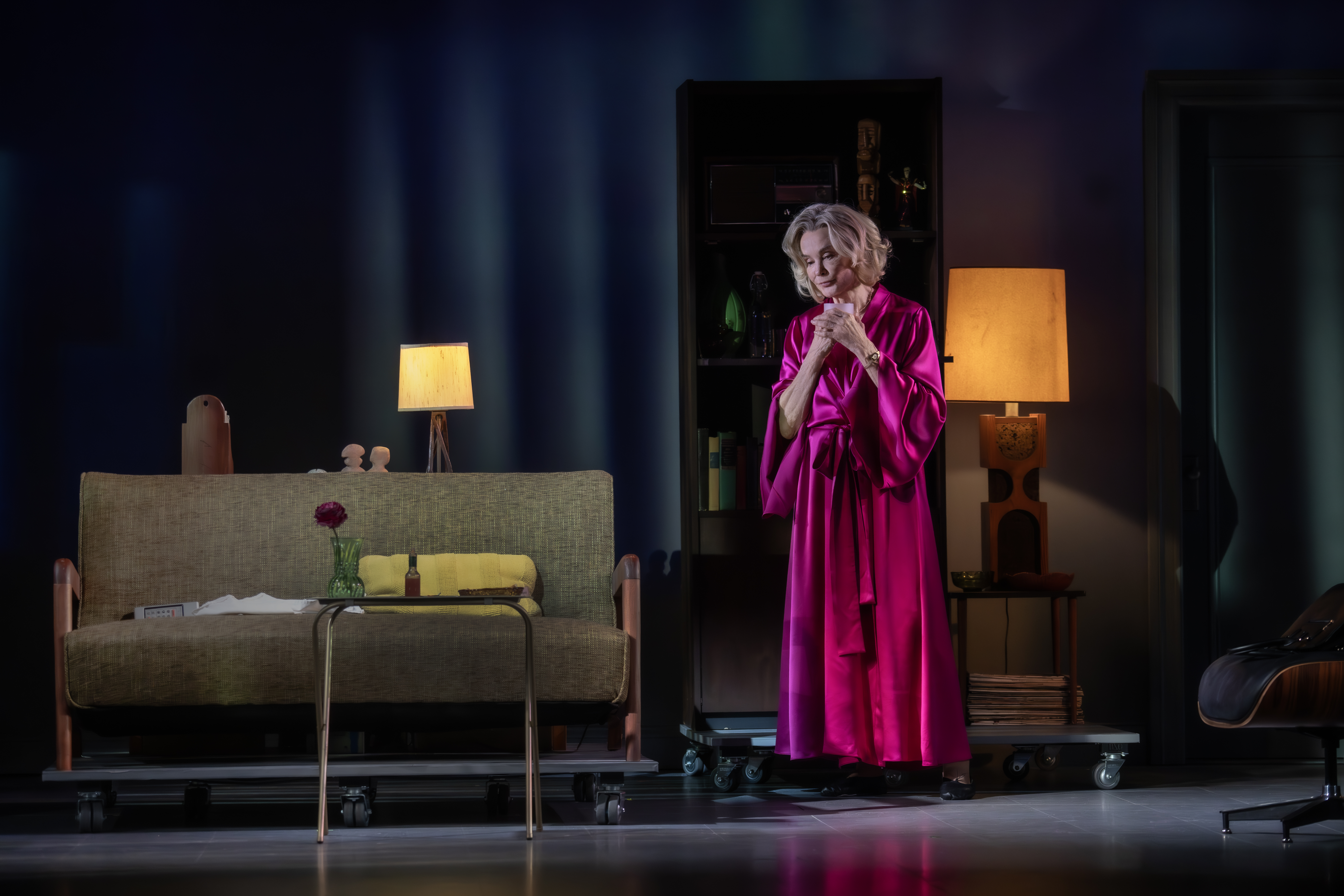The Who’s Tommy

(Photo © David Rodgers)
It would be hyperbole to say that Euan Morton was born to play the title role in The Who’s seminal rock opera Tommy, but he certainly is perfect for the part. Anyone who saw and heard Morton as Boy George in Taboo, or has enjoyed his solo shows and other appearances, knows that his beautiful pop tenor voice can be thrilling or plaintive as required by whatever music he’s singing. He’s equally compelling as an actor, adept at communicating emotional vulnerability and able to get below the skin of a character even when that character is only represented by one song in a benefit concert. So it’s no shocker that Morton is a sensation in the Bay Street Theatre’s production of The Who’s Tommy, as the piece has come to be known in its theatrical adaptation.
Originally given to the world in 1969 in the form of a double-LP recording, Tommy is about a psychosomatically deaf, dumb, and blind boy who becomes a master pinball player and then, after he’s cured of his illness, the leader of a quasi-religious cult. It’s a gorgeously tuneful and dramatic work, so it’s no surprise that it was adapted as a movie and a Broadway musical. But since the piece was conceived more or less as a song cycle, it has some major issues that need to be dealt with when it’s presented in any form that requires a strong, clear narrative line. These issues were confronted with varying degrees of success by Ken Russell, who directed and co-wrote the 1975 film version, and Des McAnuff, who directed and co-wrote the book for the stage musical that was first presented at the La Jolla Playhouse and then moved to Broadway in 1993.
To give only two examples of major decisions that need to be made when staging Tommy: Should the action of the piece be set in the years immediately following World War I, as originally conceived, or in the aftermath of WW-II, as in the film and the musical? Should the traumatic event that causes the young hero’s affliction be the murder of his mother’s lover by the boy’s father, or the father’s murder by the lover? There are also several plot inconsistencies and anachronisms that need to be smoothed over if Tommy is to be coherent to an audience, and the ill-advised rewrites done for the theatrical version by McAnuff and The Who’s own Pete Townshend — who wrote the bulk of the opera — must be finessed by anyone who decides to tackle the show.
Marcia Milgrom Dodge, the Bay Street production’s director and choreographer, has been largely unsuccessful in facing such challenges. Yes, some of her staging is extremely effective, as when the smashing of a mirror miraculously restores Tommy’s sight, hearing, and speech. But, in general, her direction is overly busy and lacks focus. For instance, in the scene immediately following the killing of the mother’s lover — yes, they went that way — Dodge has so many people on stage playing policemen, photographers, and neighbors that our attention is drawn away from the main characters just when we really need to become engaged with them.
Dodge also fails to come up with viable solutions for basic staging problems, as when she calls upon Morton to push a bed offstage while singing the climactic high note of one of his songs! Even worse is the fact that she has choreographed the show in a mish-mash of styles; the dancers often perform weird movements that look something like a cross between Martha Graham and vogueing. Many of the musical numbers suffer as a result, although Dodge’s more traditional choreography for the Act I closer “Pinball Wizard” is excellent.
The show’s lapses are all the more regrettable in that the cast is largely excellent. As Captain and Mrs. Walker, Mike McGowan and Liz Pearce are both very sexy, and they sing the hell out of the score. Josh Walden tries a bit too hard as Cousin Kevin, and Shelby Braxton Brooks is somewhat miscast as The Gypsy (a.k.a. The Acid Queen); but Paul Binotto offers a well-thought-out characterization of wicked Uncle Ernie, and Noah Galvin is touching as Young Tommy.
A kick-ass band, situated on two platforms among the audience, rocks excitingly through the phenomenal score under the direction of Roger Butterley. Gary Hygom’s set design, Martha Bromelmeier’s costumes, Paul Miller’s lighting, and Wendall K. Harrington’s projections have an overall unity of style that Dodge’s staging does not. See this Tommy for its many glories, chief among them Euan Morton’s performance, and you’ll probably find yourself forgiving its considerable flaws.











